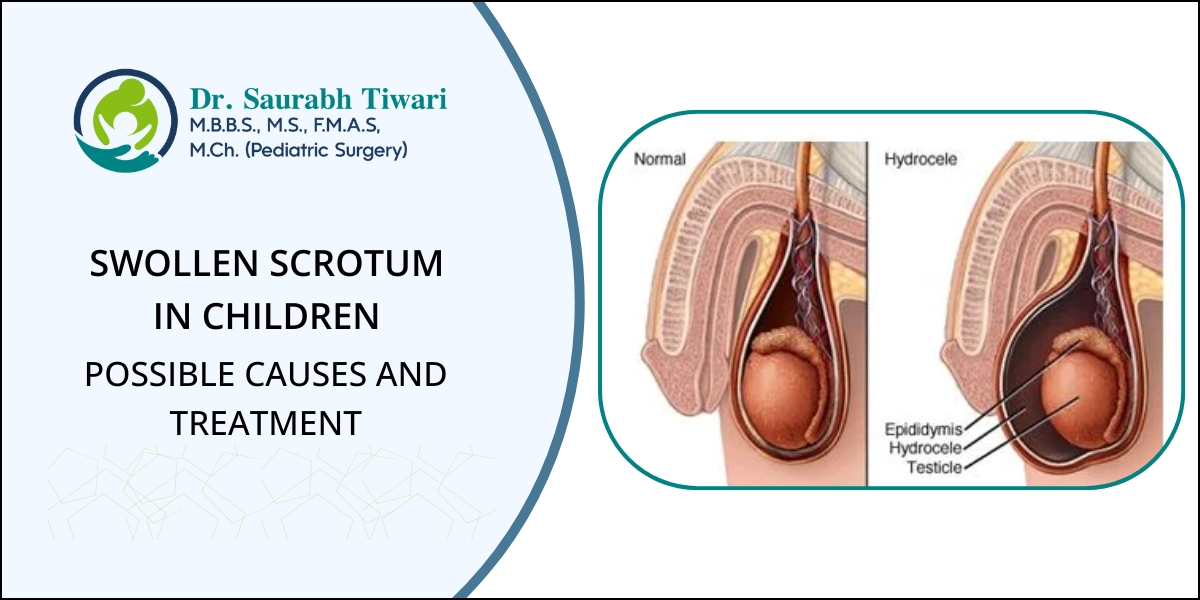Noticing a swelling in your child’s scrotum can be a moment of panic for any parent. While it’s natural to worry, it’s important to know that a swollen scrotum is a common issue in boys and infants, and most causes are treatable. Understanding the potential reasons can help you act calmly and seek the right medical care.
Common Causes of a Swollen Scrotum
A scrotal swelling can appear suddenly or develop gradually. Here are the most frequent causes:
1. Hydrocele
A hydrocele is a painless buildup of fluid in the sac surrounding a testicle, causing the scrotum to swell. It’s very common in newborns and often resolves on its own by age one. In older boys, it might require minor surgery if it doesn’t go away.
2. Inguinal Hernia
This occurs when a part of the intestine pushes through an opening in the abdominal wall into the groin or scrotum. You might notice a swelling that comes and goes, especially when the child cries or strains. An inguinal hernia requires surgical repair to prevent complications.
3. Testicular Torsion
This is a medical emergency. It happens when the spermatic cord twists, cutting off blood supply to the testicle. Symptoms include sudden, severe pain, swelling, nausea, and vomiting. Immediate surgical intervention is needed to save the testicle.
4. Epididymitis/Orchitis
This is an inflammation of the epididymis (the tube behind the testicle) or the testicle itself, often caused by an infection. It can be painful and may be accompanied by fever. Treatment typically involves antibiotics and rest.
5. Trauma or Injury
A direct blow to the scrotum can cause swelling and bruising. While often managed with rest, ice, and pain relief, a severe injury should be evaluated by a doctor to rule out damage to the testicle.
When to Seek Immediate Medical Attention
While some causes are not urgent, others are. Contact your doctor immediately if your child experiences:
- Sudden, severe scrotal pain.
- Swelling that is red, tender, or warm to the touch.
- Nausea, vomiting, or fever.
- Swelling following an injury.
- Pain that doesn’t subside.
Diagnosis and Treatment
A pediatric surgeon or urologist can diagnose the cause through a physical examination and, if needed, an ultrasound scan. Treatment depends entirely on the diagnosis:
- Hydrocele: Often monitored; surgery if persistent.
- Hernia: Corrective surgery is recommended.
- Testicular Torsion: Emergency surgery to untwist the cord.
- Infection: Treated with antibiotics.
If you are concerned about a scrotal swelling in your child, seeking expert advice is the best step. For expert care and consultation in Mumbai, you can reach out to Dr. Saurabh Tiwari, a renowned Pediatric Surgeon and Urologist in Mumbai. With specialized experience in managing conditions like hydrocele, hernia, and other pediatric surgical needs, he can provide an accurate diagnosis and the most appropriate treatment plan for your child.
Frequently Asked Questions (FAQs)
1. What is the most common cause of a painless swollen testicle in a baby?
A hydrocele is the most common cause of a painless scrotal swelling in infants, caused by fluid around the testicle.
2. Can a swollen testicle heal on its own?
Yes, in cases of a simple hydrocele in a newborn, it often resolves without treatment by age one. However, other conditions like a hernia or torsion require medical intervention.
3. Is a swollen scrotum an emergency?
It can be. Sudden, painful swelling, especially with nausea, could indicate testicular torsion, which is a surgical emergency requiring immediate care.
4. How do I know if my child has a hernia or a hydrocele?
A hydrocele typically causes a smooth, fluid-filled swelling. A hernia often presents as a bulge in the groin or scrotum that may come and go, especially with straining. A doctor can provide a definitive diagnosis.
5. What kind of doctor should I see for my child’s swollen scrotum?
It is best to consult a Pediatric Surgeon or a Pediatric Urologist who specializes in treating children’s surgical conditions.




